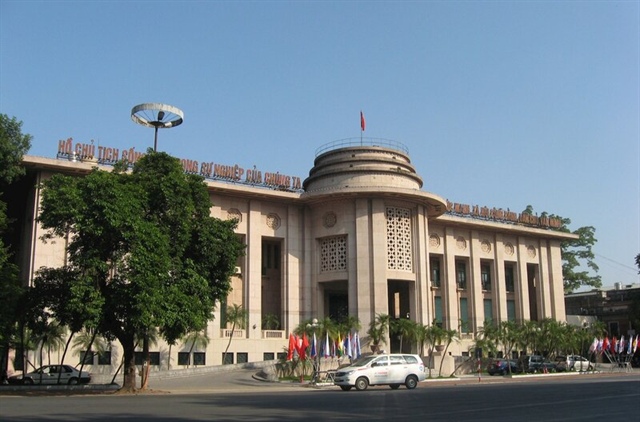Vietnam cuts interest rates for sixth time to spur growth
Vietnam cuts interest rates for sixth time to spur growth
Vietnam’s central bank cut interest rates for a sixth time this year and lowered the cap on deposit interest rates to spur economic growth even as the World Bank warned against easing monetary policy too soon.

The State Bank of Vietnam’s refinancing rate was cut to 9 percent from 10 percent, the central bank said on its website yesterday. The discount rate was cut to 7 percent from 8 percent. The cap on dong deposit interest rates was lowered to 8 percent from 9 percent. The new rates take effect Dec. 24. Borrowing costs were last reduced in July.
The central bank’s rate adjustments aim “to help companies cope with difficulties in production and business,” according to the press release. The central bank cited a “stable money market and improving liquidity at banks” for the reductions.
Vietnam’s government expects growth this year to be about 5.2 percent, which would be the slowest pace since 1999. The economy has been hampered by a lack of lending as banks face rising bad loans, while the nation faces the risk of premature easing that can trigger price pressure, the World Bank has said.
“The main reason for slow credit growth this year is that interest rates are too high,” said Chris Freund, the Ho Chi Minh City-based managing director of fund manager Mekong Capital, citing commercial lending rates of 15 percent to 17 percent. “Many companies have proactively reduced their inventory levels since the cost of financing inventory is so high.”
Lending rates cap
Central banks in Southeast Asia may be forced to abandon this year’s easing and raise interest rates in 2013, as rising inflation risks overshadow the economic gloom, HSBC Holdings Plc, UBS AG and Australia & New Zealand Banking Group Ltd. predicted. Vietnam’s consumer pricesaccelerated in November to 7.08 percent, the fastest pace in six months, with the World Bank saying on Dec. 5 that core inflation is “still very high.”
The central bank also capped the short-term lending rate for some sectors at 12 percent, effective Dec. 24. Those sectors include agriculture, exports, high technology and small- to medium-d companies.
The rate cap on dong deposits of terms of one month to less than 12 months was lowered to 8 percent from 9 percent. The cap was cut to 9 percent in June, and was 14 percent at the start of the year.
The refinancing rate was 15 percent at the beginning of the year, while the discount rate was 13 percent. Credit grew 4.15 percent through Nov. 20 according to government data, compared with 14 percent last year and 32 percent in 2010. Central bank Governor Nguyen Van Binh said last month that the ratio of non- performing loans is 8.8 percent, a level that Fitch Ratings has said is probably understated.
Moody’s Investors Service cut Vietnam’s credit rating in September, citing “more pronounced weaknesses in the banking system” and costs related to recapitalizing banks.
Banks’ reluctance to lend makes it more difficult to stimulate growth “via traditional monetary policy tools,’ Australia & New Zealand Banking Group Ltd. (ANZ) said last month.
‘‘Rate cuts have proven ineffective in boosting credit,’’ wrote Johanna Chua, the Hong Kong-based head of Asian economic research at Citigroup Inc., in a Nov. 29 note.
bloomberg



























